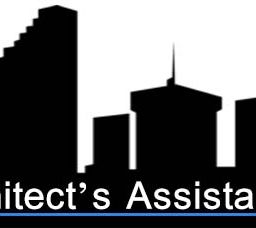
Architectural practice is a dynamic and rewarding field that offers a blend of creativity, technical expertise, and societal impact. Whether it’s as a freelance architect or an in-house employee, building a career path in architecture can be challenging but that should not stop you.
Today, we’ll highlight key details that can potentially make your journey remarkable as you focus on building a promising career path in architecture— especially when dealing with various design needs that come your way.
Ready? Let’s go!
01. Emphasize quality design and aesthetics
Architecture is an art form in itself. Design and aesthetics cover the artistic and creative elements involved in crafting spaces. As an architect, creating an appealing structure goes beyond knowing the theoretical concepts. Application is a crucial part of your work.
So, the arrangement of elements, material selection, and lighting should align in the making of visually pleasing and emotionally engaging spaces.

For instance, spatial aesthetics (which often depends on the combination of elements like colour, texture, or symmetry) should be able to convey specific messages and provoke emotions— preferably one that speaks to the intended user.
This means that how you combine design elements for a residential apartment is different from how you would for a workspace. Of course, this also suggests that you must understand the target user before you get started with developing concepts.
So, if you get a new project, it’s important that you ask specific questions.
- What’s the primary purpose of this space?
- How do you want users to feel when they step in?
- Who is this space intended for?
These are examples of questions you may want to ask your client. Answers to them will direct the flow of your design and help you create a space that’s not only beautiful but valuable to the end user.
So, what does this have to do with building your career?
First, your work speaks for you. Whether it’s through your curated portfolio or a recommendation from satisfied clients— prioritizing quality design and aesthetics reveals your expertise and creativity, making a compelling case for your services.
Also, your demonstrated ability to create remarkable and useful designs fosters trust and confidence. Clients and employers know that they can commit very significant projects to you.
02. Capitalize on your technical expertise
Your technical expertise enables you to create designs that are not only aesthetically pleasing but also structurally sound and in compliance with safety standards. So, you don’t want to ignore engineering principles, building codes, building systems, and the various aspects of construction technology. This means you’d typically have to go as far as considering factors like load-bearing capacities, structural integrity, and the integration of plumbing, electrical, and HVAC systems— even if you’d have to liaise with other professionals in the field.
A thorough application of technical expertise ensures that architectural plans can be successfully executed, resulting in buildings that are safe, functional, and durable. You don’t want to be seen as that architect who took the shortcut and delivered on a low standard. The integrity of your profession lies in the quality of work you provide, you don’t want to compromise on this.
Additionally, technical proficiency enables you to push the boundaries of innovation. You’ll know how to infuse advanced construction techniques, materials, and sustainable practices into your projects. This innovation can set you apart in a competitive field.
03. Use technology for innovative solutions
Imagine architects as modern-day inventors, always on the lookout for cool new gadgets to make structures and the building process better.
As an architect, technological advancement exposes you to new tools that enable you to work with ease and bring your ideas to life. Maximize it. For instance, the rise of BIM solutions that are aided by artificial intelligence (AI) and Virtual reality (VR) should not scare you. Instead, it should encourage you to push beyond the limits of what is often created.
Master these tools and use them to your advantage. Don’t be the last to try out new tools. Find opportunities to use them. Dedicate yourself to personal projects that will allow you to learn how to tweak that new software in your favour.
Also, commit to ongoing education and training. Attend workshops, seminars, and online courses to keep abreast of the latest architectural software and tools. Technology is always evolving and so should your skills.
04. Know that client interaction and communication are vital
Communication is very vital in architecture. Ideally, it involves understanding the client’s needs, preferences, and budget constraints, and effectively conveying design concepts. We already talked about how asking questions can help you get more clarity for the flow of your design. That’s just one side of it.
Your ability to communicate effectively with clients and team members will either make or mar your workflow— consequently affecting the quality of your work.
This is also a good opportunity to talk about defining the scope of your contract. How long does the project take? What are the milestones? How many revisions are expected? What type of assistance or resources does the client provide?
You want to avoid scenarios where a project doesn’t move forward because you and the client, or you and your team members cannot reach a suitable conclusion.
Finally, you should know how to communicate with different stakeholders you may have to deal with. Not everyone you interact with in the course of your career will be an architect like you. How do you convey your thoughts in a way they can understand? Of course, visual tools like 3D models, Renders, presentations, and so on will be quite useful.
Overall, clear communication like this helps you nurture a more positive relationship with those you’ll be working with.
05. Value mentorship
Bjarke Ingels is one of the most iconic architects of the 21st century. A notable part of his career journey was the opportunity to work with Rem Koolhas at the Office for Metropolitan Architecture (OMA), where Koolhas served as the founder and principal architect.
Under Koolhas’ guidance, Ingles (also known as BIG) was exposed to innovative and unconventional architectural concepts. Koolhaas is known for his avant-garde ideas and his willingness to challenge traditional architectural norms. This mentorship allowed BIG to explore new horizons in design and to think outside the box.
Today, Ingles is recognized for his groundbreaking designs and sustainable approach to architecture. One of his notable projects is the Mountain Dwellings in Copenhagen, Denmark, which creatively combines apartments with parking, resembling a mountain landscape.
You’ll agree that BIG’s story reveals the significance of learning from those who have gone ahead of you.

True innovation is not merely building from scratch, it’s creating something from what’s already existing.
Experienced architects can offer you insights and knowledge gained over years of practice. They can share lessons learned, best practices, and industry-specific knowledge that you might not find in textbooks or formal education.
Also, mentorship often comes with access to an expanded professional network. Your mentor can introduce you to colleagues, clients, and industry contacts, opening doors to new opportunities, collaborations, and projects — all are vital to charting your career path in architecture.
Closing words
Architecture may seem like a difficult career to thrive in, but it’s not an impossible one. As with every career path, mastery depends on time and consistency. Knowing what to look out for and what to improve on is vital to your success.
We’ve looked at a few pointers in this post: design and aesthetics, technical expertise, technology, communication, and mentorship, are a few things you may want to take note of as you chart your career path in architecture. Good luck!
















